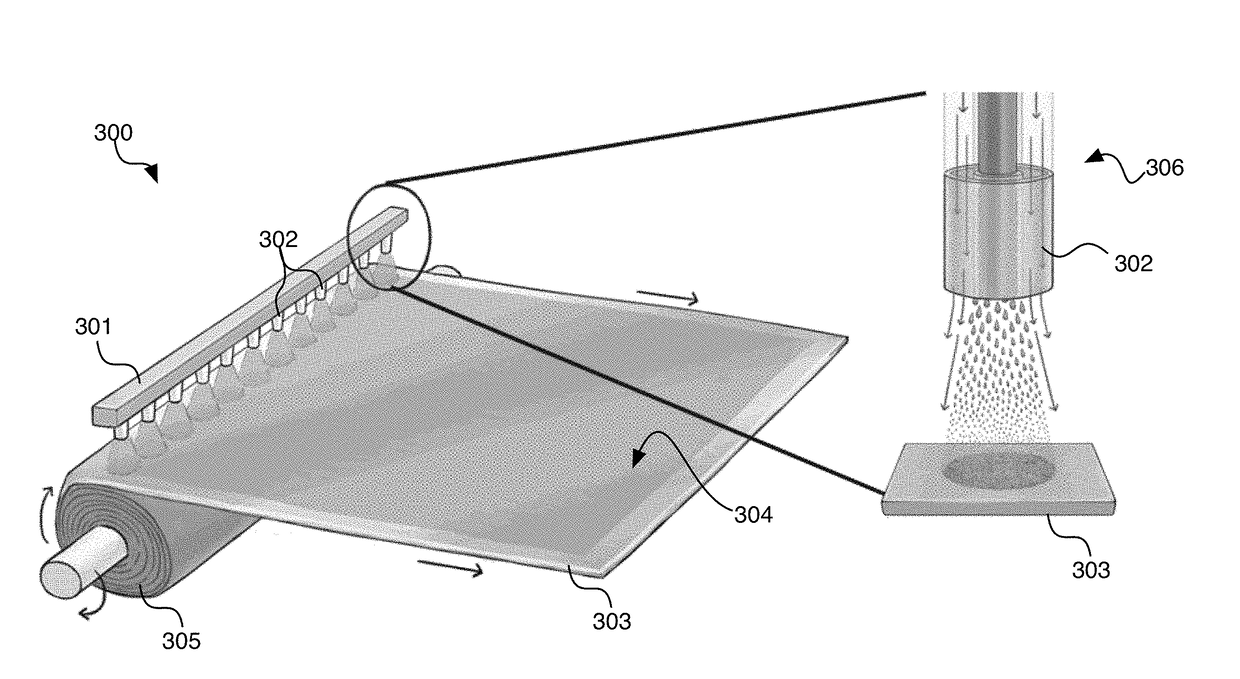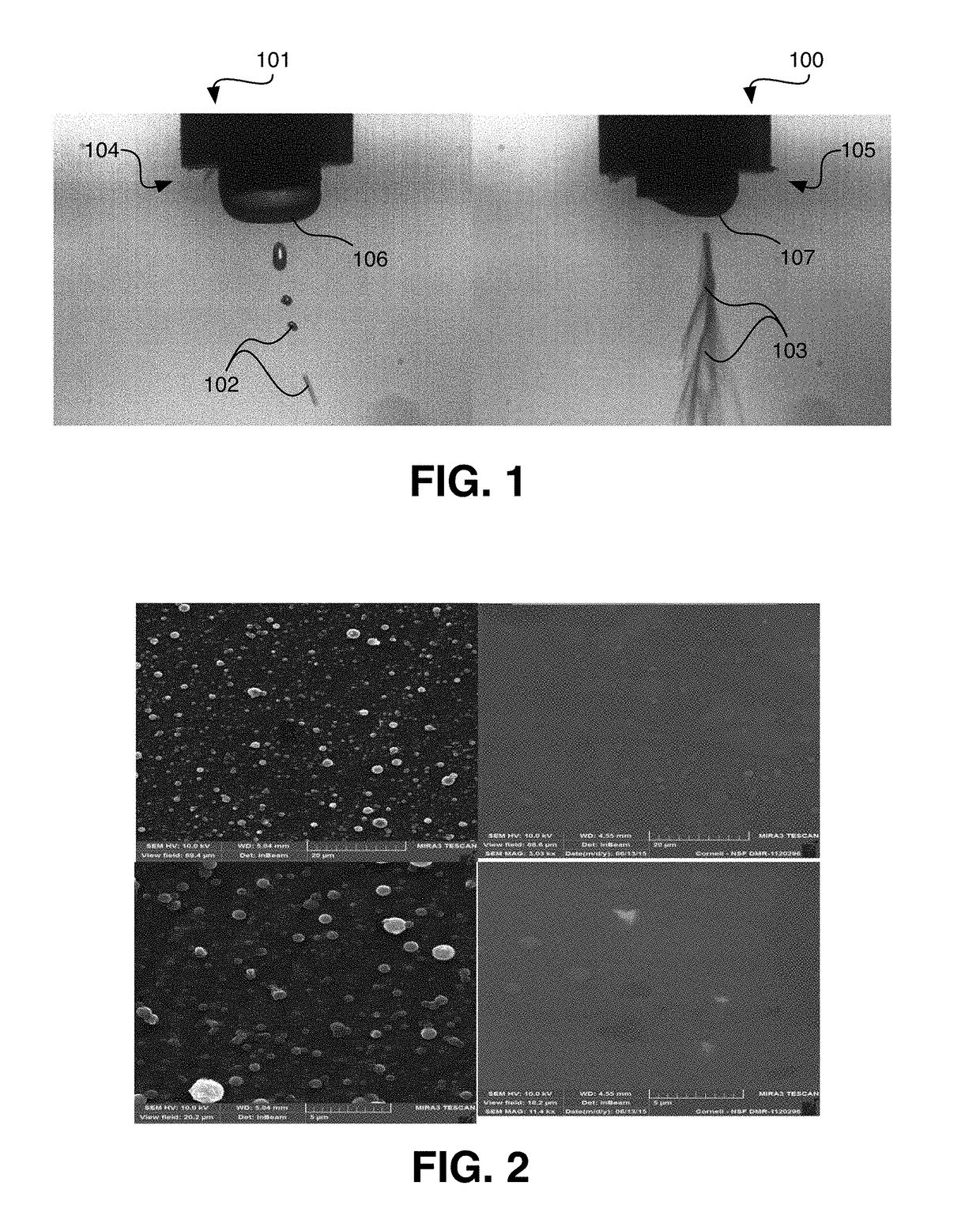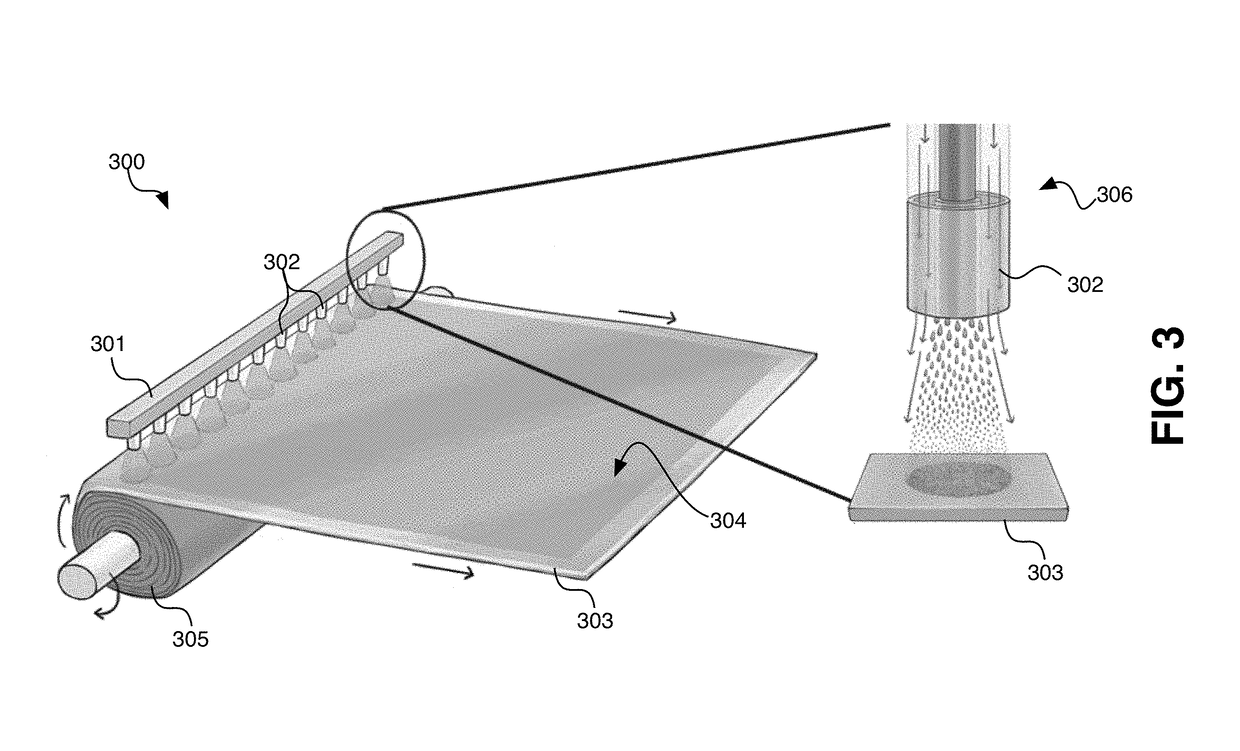Hybrid separators and the manufacture thereof
- Summary
- Abstract
- Description
- Claims
- Application Information
AI Technical Summary
Benefits of technology
Problems solved by technology
Method used
Image
Examples
example 1
[0148]A fluid stock comprising 1-5 wt. % polyvinylalcohol (PVA) in water is prepared. The solution is provided to a non-gas-controlled electrospray nozzle, to which a direct voltage of about 10 kV to about 15 kV is maintained. A grounded collector is positioned opposite the electrospray nozzle, at a distance of about 20 cm to about 25 cm. High speed imaging of the electrospray process is illustrated in FIG. 1 (left panel), and a PVA deposition is collected on the collector, as illustrated in FIG. 2 (left panels). As is illustrated in FIG. 2, the deposition is irregular, with large PVA beads being evident.
[0149]A 1-5 wt. % PVA solution is also electrosprayed by injecting the solution into a gas (air) stream (Qair of about 11 SCFH) using a coaxially configured nozzle as described herein. A direct voltage of about 10 kV to about 15 kV is maintained at the nozzle. A grounded collector is positioned opposite the electrospray nozzle, at a distance of about 20 cm t...
example 2
[0150]A fluid stock is prepared similar to as described in Example 1, with a concentration of >5% polyvinylalcohol (PVA) in water. The solution is provided to a gas-controlled electrospin nozzle, to which a direct voltage of about 10 kV to about 15 kV is maintained. A grounded collector is positioned opposite the electrospin nozzle, at a distance of about 20 cm to about 25 cm. Fibers are electrospun with gas under conditions similar to those identified in Example 1.
example 3
eramic Hybrid Membrane
[0151]Using a process similar to that described in Example 2, a fluid stock is prepared using polyacrylonitirle (PAN) in DMF (8-15 wt. %) and adding a ceramic precursor (a silazane). The fluid stock is processed using a similar gas-assisted process as described in Example 2 and collected. The fibers are cured at a rate suitable for obtaining a continuous ceramic matrix (co-continuous with polymer), with a ceramic coat. A fibrous mat is collected and prepared into a membrane, such as illustrated in FIG. 10.
[0152]A strip of the membrane is prepared. One end of the membrane strip placed into an electrolyte bath. A strip of conventional polyolefinic separator (CELGARD® 2400) is similarly treated. After allowing the electrolyte to absorb into the membranes (wick), the uptake of electrolyte is compared. FIG. 10 illustrates the dramatically improved wettability of an exemplary polymer-ceramic hybrid membrane material provided herein relative to a polypropylene (PP) se...
PUM
| Property | Measurement | Unit |
|---|---|---|
| Length | aaaaa | aaaaa |
| Length | aaaaa | aaaaa |
| Fraction | aaaaa | aaaaa |
Abstract
Description
Claims
Application Information
 Login to View More
Login to View More - R&D
- Intellectual Property
- Life Sciences
- Materials
- Tech Scout
- Unparalleled Data Quality
- Higher Quality Content
- 60% Fewer Hallucinations
Browse by: Latest US Patents, China's latest patents, Technical Efficacy Thesaurus, Application Domain, Technology Topic, Popular Technical Reports.
© 2025 PatSnap. All rights reserved.Legal|Privacy policy|Modern Slavery Act Transparency Statement|Sitemap|About US| Contact US: help@patsnap.com



